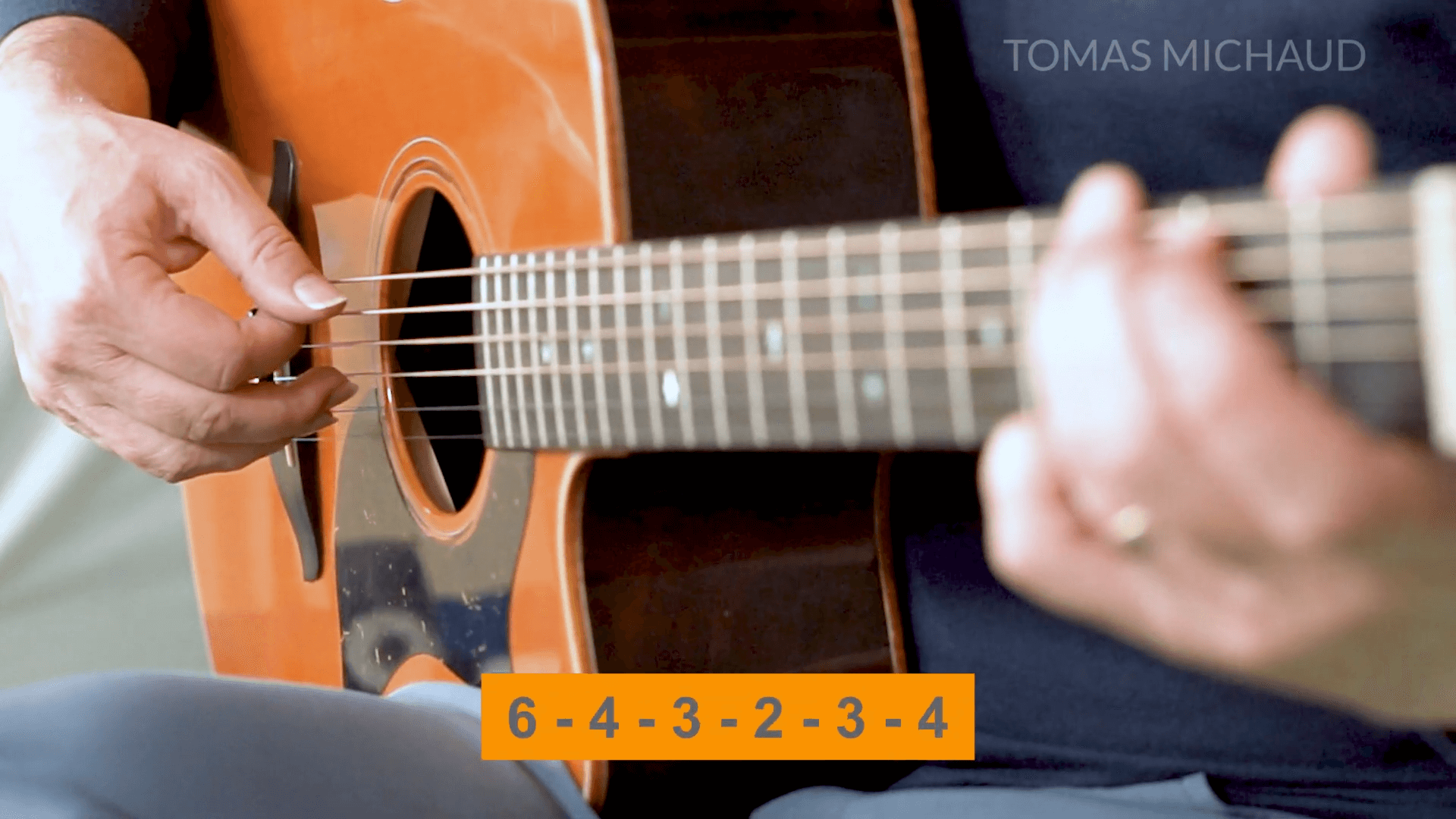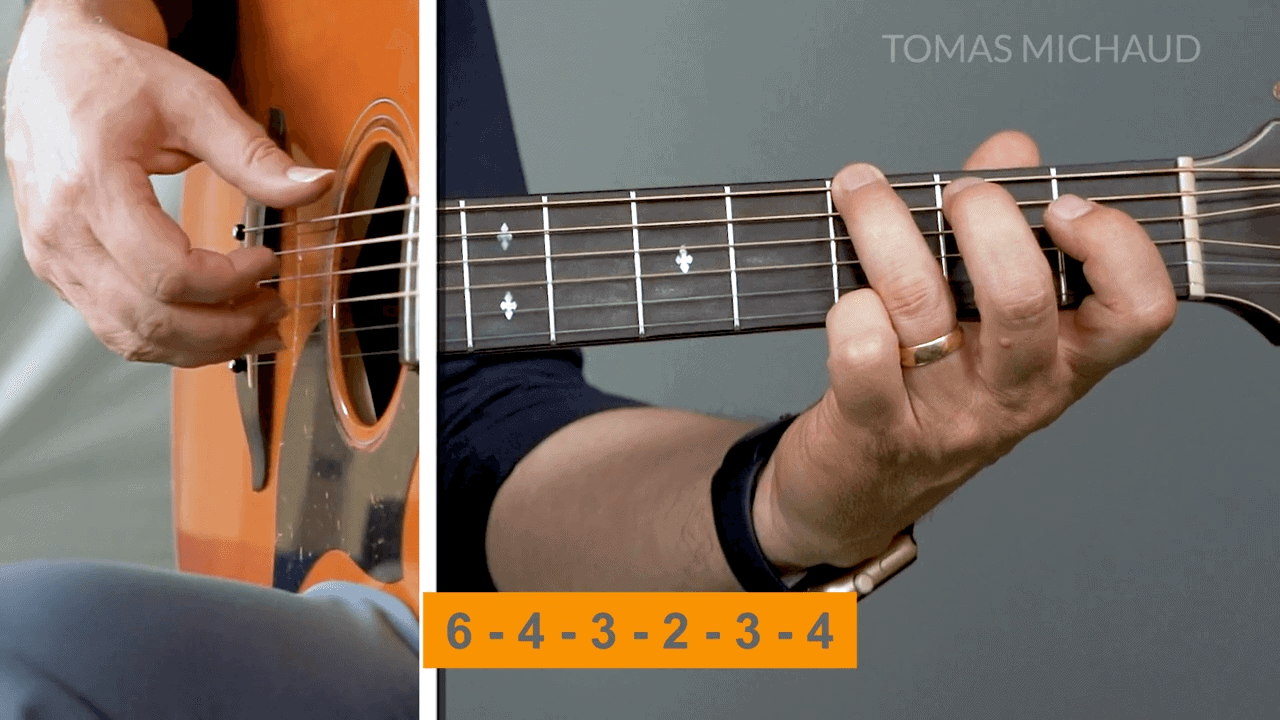Amazing Grace is truly a classic, and also our first song in 3/4 time signature. Up to now, we’ve done 4/4 time signatures where we have four beats per measure. In 3/4 time signature, we have three beats per measure, which calls for a new fingerpicking pattern that we introduce here.
Fingerpicking Pattern

The pattern that we’re going to use employs downbeats and upbeats. As mentioned, we have three beats, and we can think of it as 1 + 2 + 3 +. We’re going to start the pattern with the thumb and then move on to the higher strings. The pattern on the right hand is p - i - m - a - m - i.
The song starts on a G major chord. To prepare for the start of the song, we should place our thumb on the sixth string, index on the fourth string, middle finger on the third string, and ring finger on the second string. The order in which the strings are plucked is 6 - 4 - 3 - 2 - 3 - 4.
Chords

The Amazing Grace fingerpicking pattern features the following chords: G, C, D7, and Em. The G chord can be done with just your ring finger from the left hand on the sixth string third fret (the G bass note).
Although we use the same pattern for each of the chords, the strings we pluck will change as we switch chords. For instance, on the C chord, the bass starts on the fifth string (rather than the sixth as it happens on the G chord). Therefore, the pattern on the string orders or pattern on the C chord becomes 5 - 4 - 3 - 2 - 3 - 4.
On the other hand, the D7 starts with the bass on the fourth string, and then the string order becomes 4 - 3 - 2 - 1 - 2 - 3.
Finally, we have the Em chord which starts on the sixth string and with the pattern 6 - 4 - 3 - 2 - 3 - 4, which is the same string pattern used on the G chord.
Form
Let’s map out the form, which is just the order of the chords and for how many bars they play. Amazing Grace starts out with a G chord that plays for two bars. We then move on to C for just one bar and then back to G for three bars. Then we go to D7 for two bars and move to G for two bars. Next, we move on to C for one bar, back to G for one bar, Em for a bar, and D7 also for one bar. We end on G which is played for two bars.
Conclusion
Amazing Grace is one of those songs that everybody should learn. Not only is it a classic, but it also gives us a great chance to work on a new fingerpicking pattern thanks in part to its 3/4 time signature.
Make sure you take it slow and step by step at first. Start out with just the pattern on one chord. Once you have that, you can move on to another chord to see how the pattern feels. Finally, it's time to put it all together with the form of the song. Go slow at first, and make sure the changes are played smoothly and correctly.
This lesson is just one of a series of lessons on a course I called FingerStyle Adventures, available with a membership to Real Guitar Success. Have fun!
Save To Pinterest



